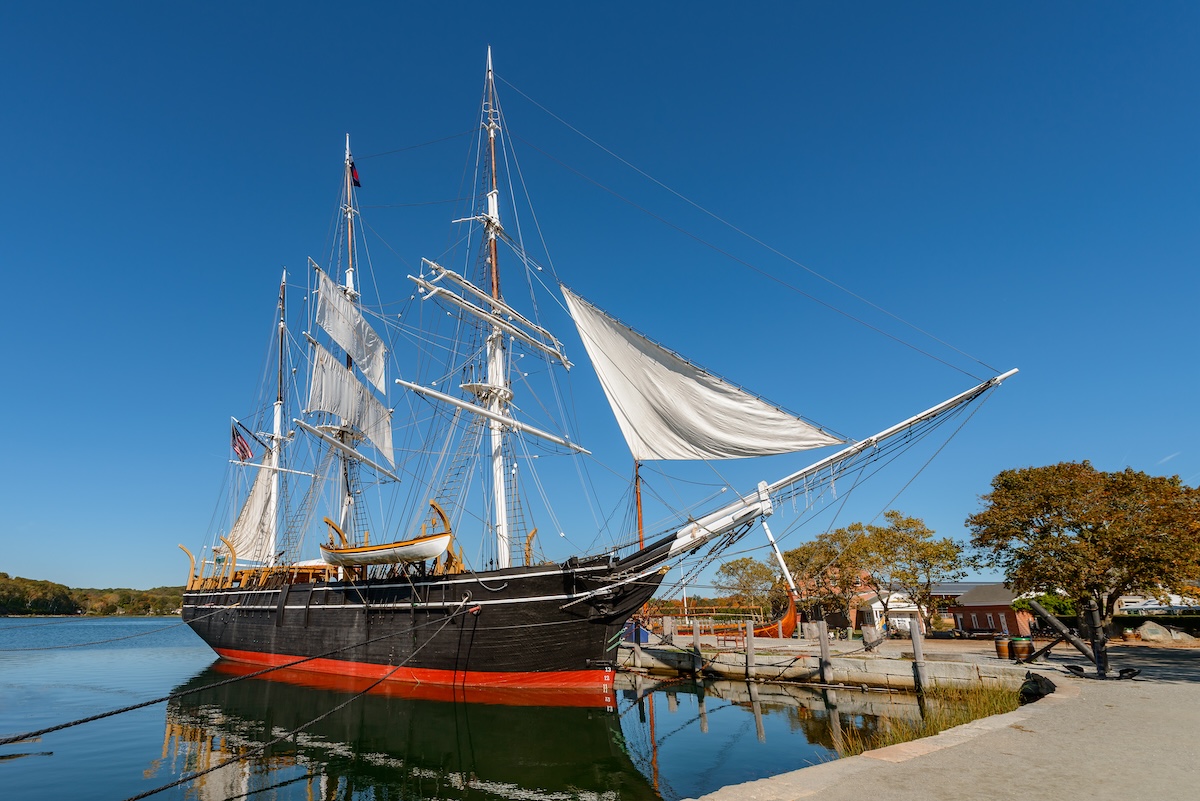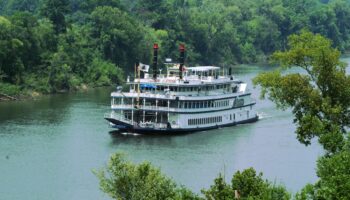Maritime museums might not top everyone’s vacation bucket list, but they totally should be. These waterfront gems pack in way more than dusty ship models and sailor uniforms. The best maritime museums bring seafaring history to life with massive historic vessels you can actually board, hands-on exhibits, and stories that connect America’s watery highways to everything from immigration to warfare.
They’re perfect for history buffs, boat lovers, or just anyone wanting something different from the usual tourist traps. Whether you’re coastal cruising or landlocked but curious, these amazing maritime museums deliver unique experiences that’ll change how you see America’s relationship with the water.
10. Texas Seaport Museum (Galveston, Texas)

The star of this harbor-front museum is the 1877 tall ship ELISSA, and she’s no static display. This three-masted iron barque still sails the Gulf of Mexico regularly, making her one of America’s oldest functional sailing vessels. Volunteers spend thousands of hours maintaining her rigging, deck, and hull using traditional methods.
Inside the brick warehouse museum, you can search a database of 133,000+ immigrants who entered through what was once called the “Ellis Island of the West.” Kids love climbing aboard ELISSA’s deck and imagining life at sea, while adults appreciate the unvarnished stories of Galveston’s boom-and-bust port history. The museum sits right on the working harbor – a perfect contrast of maritime past and present.
9. New Bedford Whaling Museum (New Bedford, Massachusetts)

This museum tells the complicated story of a city once crowned “the richest per capita in America” thanks to whale oil. Rather than glorifying whaling, exhibits examine it from all angles – economic powerhouse, multicultural employer, technological innovator, and ultimately unsustainable industry.
The collection includes five complete whale skeletons hanging overhead and the world’s largest collection of carved whale bone art. It anchors New Bedford’s cobblestone historic district, where Herman Melville once walked before writing Moby-Dick. Time your visit for the annual Moby-Dick Marathon in January, when volunteers read the entire novel aloud non-stop over 25 hours.
8. Michigan Maritime Museum (South Haven, Michigan)

The Great Lakes have their own distinct maritime culture, and this Lake Michigan museum captures it perfectly. Forget about salty seas – here it’s all about freshwater sailing, commercial fishing, and recreational boating across waters so vast they’re called inland seas.
What makes this place special is getting out on the water. In summer, you can actually sail on the Friends Good Will, a replica tall ship that plies the lake daily. The museum’s five waterfront buildings include a working boat shop where you can watch craftspeople restore wooden vessels using traditional methods. Kids can try their hand at knot tying, ship design, and water safety in hands-on exhibits.
7. Columbia River Maritime Museum (Astoria, Oregon)

Situated where the massive Columbia River crashes into the Pacific Ocean, this museum focuses on one of the world’s most dangerous water crossings. The Columbia River Bar has wrecked over 2,000 vessels, earning its grim nickname “Graveyard of the Pacific.”
Massive windows frame views of the actual river while you explore exhibits on shipwrecks, Coast Guard rescues, and the bar pilots who guide ships through treacherous waters. Also step aboard the Lightship Columbia moored outside – this floating lighthouse once marked the river entrance before modern technology replaced it.
6. Maine Maritime Museum (Bath, Maine)

Set on a former shipyard where massive wooden schooners once took shape, this 20-acre campus combines indoor galleries with outdoor exhibits. The full-size sculpture outline of the Wyoming – the largest wooden sailing vessel ever built in America – gives jaw-dropping perspective on Maine’s shipbuilding ambitions.
Inside, exhibits cover everything from lobstering techniques to navigational tools, but the museum really shines in preserving traditional skills. The working boat shop lets you watch craftspeople building wooden vessels using methods passed down for generations. The scenic location, with historic shipyard buildings overlooking the river, makes even just wandering the grounds worthwhile.
5. The Mariners’ Museum and Park (Newport News, Virginia)

This mammoth museum houses the largest maritime collection in the Western Hemisphere across 90,000 square feet of galleries. The crown jewel is the USS Monitor Center, where you can watch conservators working to preserve artifacts from the famous Civil War ironclad raised from the Atlantic seafloor.
The surrounding 550-acre park features hiking trails around Lake Maury and the impressively ornate Lions Bridge. Despite the collection’s scholarly significance, the museum maintains a welcoming vibe that works for maritime enthusiasts and casual visitors alike.
4. Maritime Museum of San Diego (California)

This floating collection transforms San Diego’s harbor into a timeline of seafaring history. The star is the iron-hulled Star of India (1863), the world’s oldest active sailing ship, but the fleet includes everything from an authentic Soviet submarine to a replica of Juan Rodriguez Cabrillo’s 1542 San Salvador.
Depending when you visit, you might cruise the bay on an 1898 steam yacht, sail on a replica tall ship, or explore below the waterline in a submarine. The museum frequently offers special experiences like sailor combat demonstrations, cannon firings, and overnight adventures for kids.
3. Independence Seaport Museum (Philadelphia, Pennsylvania)

Located on Penn’s Landing along the Delaware River, this museum connects Philadelphia’s surprising maritime history to the city’s overall development. Most visitors don’t think of Philly as a seaport, but this museum shows how its waterways shaped everything from immigration to industry.
The museum lets you explore two National Historic Landmark vessels – the 1892 cruiser Olympia and the WWII submarine Becuna. Indoor exhibits cover Philadelphia’s shipbuilding legacy, the city’s naval history, and the ecology of the Delaware River watershed. The Workshop on the Water features boat builders practicing traditional wooden boat construction in full view of visitors.
2. Chesapeake Bay Maritime Museum (St. Michaels, Maryland)

Spread across 18 waterfront acres in a picturesque Eastern Shore town, this museum captures the unique working culture of North America’s largest estuary. The collection showcases the distinctive boat types that evolved to handle the Chesapeake’s shallow waters – skipjacks, log canoes, crabbing skiffs, and buyboats.
The centerpiece is the 1879 Hooper Strait Lighthouse, moved to the museum grounds and open for climbing. The working boatyard isn’t just for show – skilled shipwrights maintain the museum’s floating fleet and preserve traditional Chesapeake boat building methods, often chatting with visitors as they work. Seasonal demonstrations also let you try hand tonging for oysters or pulling crab pots.
1. Mystic Seaport Museum (Mystic, Connecticut)

America’s largest maritime museum recreates an entire 19th-century coastal village across 19 waterfront acres. More than 60 historic buildings house blacksmiths, coopers, shipwrights and other craftspeople demonstrating traditional maritime skills. The museum’s four National Historic Landmark vessels include the Charles W. Morgan, the last wooden whaleship in existence.
Costumed interpreters discuss seafaring life, craftspeople create authentic maritime objects, and visitors can help hoist sails on historic vessels during summer sailing demonstrations. Beyond the village, exhibition halls house impressive collections of scrimshaw, ship figureheads, and maritime art. This truly is enough to shiver your timbers!













Leave a Reply